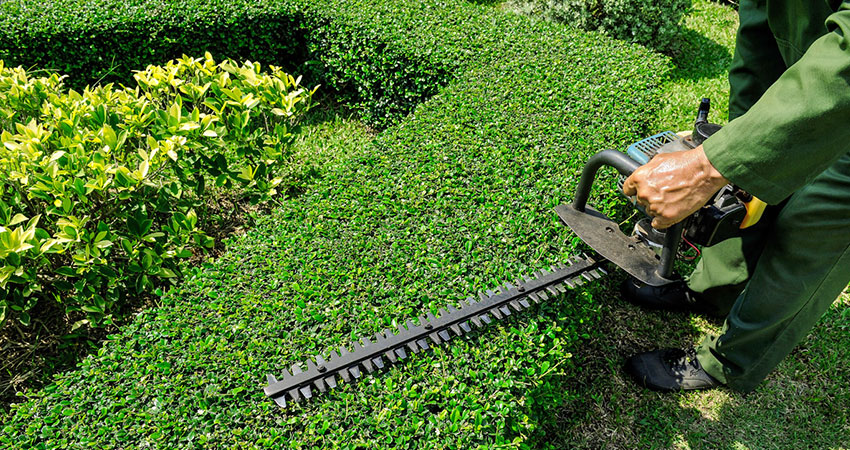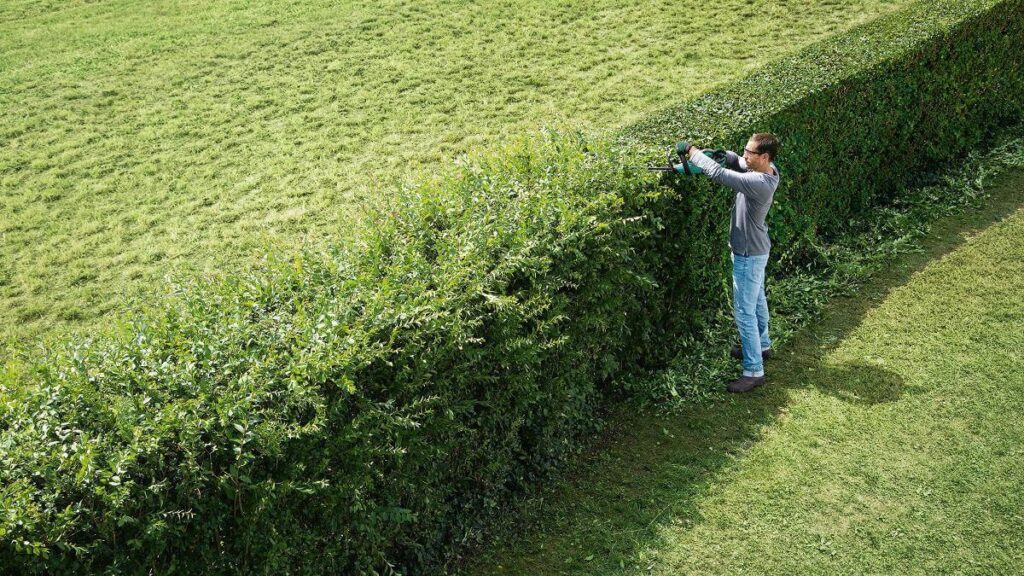Residential Hedge Trimming: Expert Care for Your Home
If you want to enhance the beauty of your home and ensure the health and growth of your plants, regular hedge trimming is essential. Not only does it promote a neat and tidy appearance, but it also prevents property damage and potential hazards. In this article, we will explore the importance of residential hedge trimming and provide valuable tips on how to care for different types of hedges.
Understanding the Importance of Regular Hedge Trimming
Enhancing Your Home’s Aesthetic Appeal
One of the primary reasons homeowners invest in residential hedge trimming is to improve the overall look of their property. Well-maintained hedges can instantly boost curb appeal, making your home more inviting and visually appealing. With precise trimming, you can create clean lines and shapes, transforming your outdoor space into a picture-perfect haven.
Imagine stepping out of your front door to be greeted by perfectly manicured hedges lining your walkway, exuding elegance and charm. The symmetrical beauty of well-trimmed hedges not only enhances your home’s aesthetic appeal but also creates a sense of order and sophistication in your outdoor landscape.

Promoting Plant Health and Growth
Regular trimming encourages healthy growth and vitality in your hedges. By removing dead or diseased branches, you prevent the spread of infections and diseases to the rest of the plant. Trimming also allows for better air circulation and sunlight penetration, essential for the overall health and development of your hedges.
Furthermore, proper hedge maintenance through regular trimming stimulates new growth, resulting in denser and lusher foliage. This lush greenery not only adds vibrancy to your outdoor space but also serves as a natural privacy barrier, shielding your home from prying eyes and creating a tranquil oasis in your backyard.
Preventing Property Damage and Hazards
Overgrown hedges can pose serious threats to your property. During heavy storms or strong winds, unruly branches can break and cause damage to windows, roofs, and other structures. Regular trimming minimizes the risk of accidents and ensures that your property remains safe and secure.
Additionally, well-trimmed hedges act as a natural deterrent to pests and unwanted critters, reducing the chances of infestations that could harm your plants or invade your home. By maintaining a well-groomed hedge line, you not only protect your property from potential damage but also create a harmonious balance between nature and your living space. Click here for choosing the right tree pruning service for your property.
The Basics of Residential Hedge Trimming
Necessary Tools and Equipment
Before you start trimming your hedges, it’s important to gather the necessary tools and equipment. These typically include pruning shears, hedge trimmers, hand saws, safety goggles, and gloves. Investing in quality tools will not only make the job easier but also ensure cleaner cuts and precise shaping.
Additionally, having a sturdy pair of hedge clippers can make a significant difference in the efficiency and effectiveness of your trimming. These clippers come in various sizes and styles, so it’s essential to choose one that suits your specific hedge trimming needs. Some clippers even come with extendable handles to reach higher branches without the need for a ladder.
Best Time for Hedge Trimming
The ideal time for hedge trimming varies depending on the type of hedge you have. For deciduous hedges, it’s best to prune them during late winter or early spring before new growth appears. Evergreen hedges, on the other hand, require trimming in late spring or early summer to promote healthy growth. Flowering hedges should be pruned immediately after blooming to avoid cutting off next year’s flower buds.
It’s important to consider the specific growth patterns of your hedges when determining the best time for trimming. Observing the growth cycle of your hedges can help you plan the trimming schedule more effectively, ensuring optimal health and appearance for your plants throughout the year.
Safety Measures to Consider
While hedge trimming may seem like a simple task, it’s important to prioritize safety. Always wear protective goggles and gloves to shield yourself from flying debris or accidental cuts. Use sturdy ladders or platforms to reach higher branches, and always work with caution. If the job seems too challenging or risky, it’s best to hire professional help to ensure your safety and the best results.
In addition to wearing protective gear, it’s crucial to inspect your tools before starting the trimming process. Ensure that the blades of your shears and trimmers are sharp and in good condition to make clean cuts and prevent damage to the hedges. Regular maintenance of your tools will not only improve their performance but also prolong their lifespan, saving you time and money in the long run.
Different Types of Hedges and Their Care
When it comes to hedges, there are various types to choose from, each requiring specific care to thrive and enhance the beauty of your outdoor space. In addition to providing privacy and structure to your garden, hedges can also attract wildlife and create a natural habitat for beneficial insects.
Deciduous Hedges
Deciduous hedges, such as privet or beech, add a dynamic element to your garden as they shed their leaves during the winter months. This shedding process allows for a seasonal change in the appearance of the hedge, bringing a different texture to your landscape. To care for deciduous hedges, it is recommended to prune them in late winter or early spring while they are dormant. By removing any dead or damaged branches and shaping the hedge to your desired form, you can promote healthy growth and maintain its overall health.
Furthermore, deciduous hedges can provide nesting sites for birds and shelter for small mammals during the colder months. Their changing foliage can also create a stunning backdrop for your garden, especially when planted alongside evergreen hedges or colorful flowering shrubs.
Evergreen Hedges
Evergreen hedges, including boxwood and yew, are prized for their year-round foliage, which adds structure and greenery to your garden regardless of the season. These hedges require regular maintenance to keep them looking their best. It is advisable to trim evergreen hedges in late spring or early summer to encourage healthy growth and maintain their density. Removing any dead or diseased branches is essential to prevent the spread of pests and diseases within the hedge.
Moreover, evergreen hedges can act as a windbreak, providing protection for more delicate plants in your garden. Their dense foliage also offers privacy and noise reduction, creating a peaceful and secluded environment for you to enjoy. By shaping evergreen hedges carefully, you can create formal hedges for a classic look or opt for a more natural, informal style to complement a cottage garden aesthetic.
Flowering Hedges
Flowering hedges, such as hydrangea or lilac, bring a burst of color and fragrance to your garden when in bloom. These hedges require specific care to ensure they produce abundant flowers year after year. After the flowering season, typically in late spring or summer, it is recommended to prune flowering hedges to remove spent flowers and shape the plant. Avoid pruning them too late in the year, as this may impact next year’s flower production.
Additionally, flowering hedges can attract pollinators like bees and butterflies to your garden, contributing to the overall health of your outdoor ecosystem. Their vibrant blooms can also be used for cut flower arrangements, bringing a touch of the outdoors into your home. When selecting flowering hedges, consider choosing a mix of early, mid, and late-flowering varieties to ensure a continuous display of color throughout the growing season.

Techniques for Effective Hedge Trimming
Initial Shaping and Pruning
When starting with a new hedge, it’s essential to establish its shape and density. Trim the hedge to the desired height and width, removing any dead or damaged branches. Be mindful of maintaining a slightly tapered shape, with the top slightly narrower than the base, allowing for better sunlight exposure.
Maintenance Trimming
Regular maintenance trimming involves removing excessive growth and maintaining the established shape of the hedge. Use hedge trimmers to gently prune the sides of the hedge, making sure not to cut too far into the green foliage. Take care to step back occasionally and assess the overall appearance to ensure an even and balanced look.
Restorative Pruning
If your hedge has been neglected and become overgrown, restorative pruning is necessary to bring it back to its desired shape. This process involves more drastic cutting back, removing large sections of the hedge to promote new growth. However, be careful not to trim too aggressively, as it can shock the plant and hinder its recovery.
Another important aspect of hedge trimming is understanding the growth patterns of different types of hedges. Some hedges, like boxwood, have a dense growth habit and require more frequent trimming to maintain their shape. On the other hand, hedges such as yew or privet may have a more relaxed growth habit and can be trimmed less frequently.
When it comes to the tools used for hedge trimming, investing in quality equipment is crucial. Sharp hedge trimmers with adjustable blades allow for precise cuts and reduce the risk of damaging the hedge. Additionally, using long-handled shears or loppers can help reach higher branches and achieve a more uniform appearance.
It’s also important to prioritize safety while trimming hedges. Wear protective gloves and goggles to shield yourself from thorns and debris. If using a ladder, ensure it is stable and positioned correctly. Avoid trimming hedges near power lines or in adverse weather conditions to prevent accidents.
Lastly, seeking professional advice and assistance can be beneficial, especially if you are unsure about the specific needs of your hedges. Professional arborists or horticulturists can provide expert guidance on the best trimming techniques for your particular hedge species and help you avoid common mistakes.
In conclusion, residential hedge trimming is crucial for maintaining the aesthetic appeal, promoting plant health, and preventing property damage. By understanding the basics of hedge trimming, caring for different types of hedges, and utilizing effective techniques, you can ensure your home’s hedges are always in optimal condition. Remember to prioritize safety, invest in quality tools, and when in doubt, consult professionals for expert care. With regular maintenance and proper trimming, you can enjoy beautifully shaped hedges that enhance the overall beauty of your home.
Other resources: Commercial Buyers Agency The Secret Weapon in Commercial Real Estate

